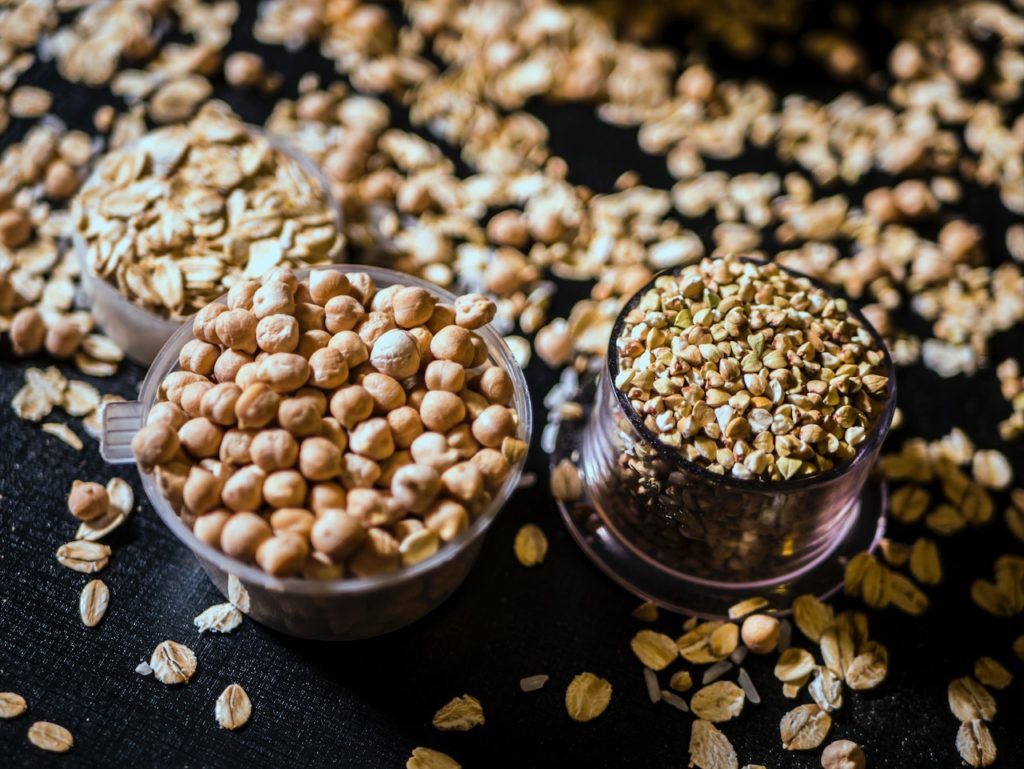Whole Grains: Hearty Options to Include in Your Healthy Diet
Table of Contents
Author: Kunal Tambe
Kunal Tambe is part of the content marketing team at Two Brothers Organic Farms. With his team, he works tirelessly to create awareness about organic farming, food sovereignty, sustainable practices, nutrition, climate change and a myriad of issues that surround these topics. His content offers value to farmers, the agriculture industry and to end consumers. Besides writing and developing content strategies, he loves adventure sports and listening to classical music.

5 Whole Grains Health Benefits

Many consume whole grains to stay healthy and feel satiated. However, its benefits go way beyond.
1. Provide Fiber
Fiber present in whole grains keeps you full for longer and aids your gut health. Not all whole grains are packed with fiber, so prefer eating barley, oats, and bulgur that have soluble and insoluble fiber.
2. Improve Digestion
If you have a certain weight target to achieve, then whole grains are highly recommended as they improve digestion and keep you fuller for long. Oats, brown rice, quinoa, and whole-wheat bread are the best examples of whole grains that result in lower body fat and healthier weight.
3. Reduce the Risk of Type -2 Diabetes
Whole grains ensure a balanced diet, which prevents and controls diabetes. This benefit can be attributed to its rich fiber content. Thus, eating at least three servings per day of whole grains can reduce the risk of type 2 diabetes.
4. Bring Down Cholesterol
Eating whole grains restricts the absorption of bad cholesterol in our body while lowering triglycerides, both of which are the key reasons for heart disease.
5. Mitigate Chances of Heart Disease
Your unhealthy dietary habits, such as consuming foods high in sodium, trans fat, cholesterol, and saturated fat can lead to heart disease. However, nutrient-rich foods, such as whole grains can have the opposite effect, lowering the risk of chronic diseases.
6 Whole Grains to Include in Your Diet

The most frequent question among people is ‘what are some healthy grain options?’ Well, you have plenty of options to choose from, available in different versions of flour, rice, cereal, etc.
1. Whole oats
Oats are undoubtedly the healthiest whole grains packed with minerals, vitamins, and fiber. They are high in antioxidants that reduce the chances of colon cancer. Also, they provide beta-glucans, which is a soluble fiber good for digestion.
2. Khapli wheat
Khapli wheat (emmer wheat) provides twice the fiber and protein that normal wheat. Also, it fills you faster and reduces untimely hunger pangs, which help in weight loss.
3. Buckwheat
Buckwheat is a healthy whole grain used just like cereals. It’s a type of seed that contains magnesium, iron, fiber, copper, and vitamin B. It provides resistant starch and is naturally gluten-free.
4. Brown rice
Brown rice has three parts, germ, bran, and endosperm and nothing is removed from the grain during milling. Although brown rice is slightly higher in calories than white rice, it is a great source of fiber and protein. Also, it promotes good gut bacteria, controls blood sugar, and brings down cholesterol.
5. Borghum
Sorghum is used in different forms across nations, serving different purposes. In the US, people with autism, celiac disease, irritable bowel syndrome, and ADHD use it as a gluten-free grain while in the Middle East, it’s popular to make bread and couscous. You can also eat it as popcorn or in baked goods and pizza.
5. Barley
One of the oldest grains, Barley, consists of the most fiber out of all whole grains and is rich in minerals, vitamins, and antioxidants.
6. Millet
Millet is a well-known ingredient in birdseed but has been used in cuisines for decades s a staple ingredient in Africa, India, China, and other nations. Health benefits of millet include lower blood triglycerides, controlled blood sugar levels, and reduced inflammation.
Bottom Line
When it comes to whole grains, you have plenty of options to choose from. Eating a variety of these healthy grains not only makes your meals interesting but provides essential nutrients too.
Further Exploration - Articles & Media

Article: 14 Healthy Whole-Grain Foods (Including Gluten-Free Options)
14 healthy whole grain foods from Healthline including whole-grain rye, spelt and quinoa.

Article: What are the Health Benefits? The Whole Grains Council
The main health benefits of whole grains from the Whole Grains Council. Includes a link to a research paper summarizing major studies that have analyzed the health benefits of whole grain.

Article: 18 Health Benefits of Whole Grains
18 health benefits from health.com including lowering blood pressure, helping to control weight and redistributing weight.
Further Mental Wellbeing Guides from Peaceful Soul

Mind Guides
Click here for the latest guides to help mental wellbeing
